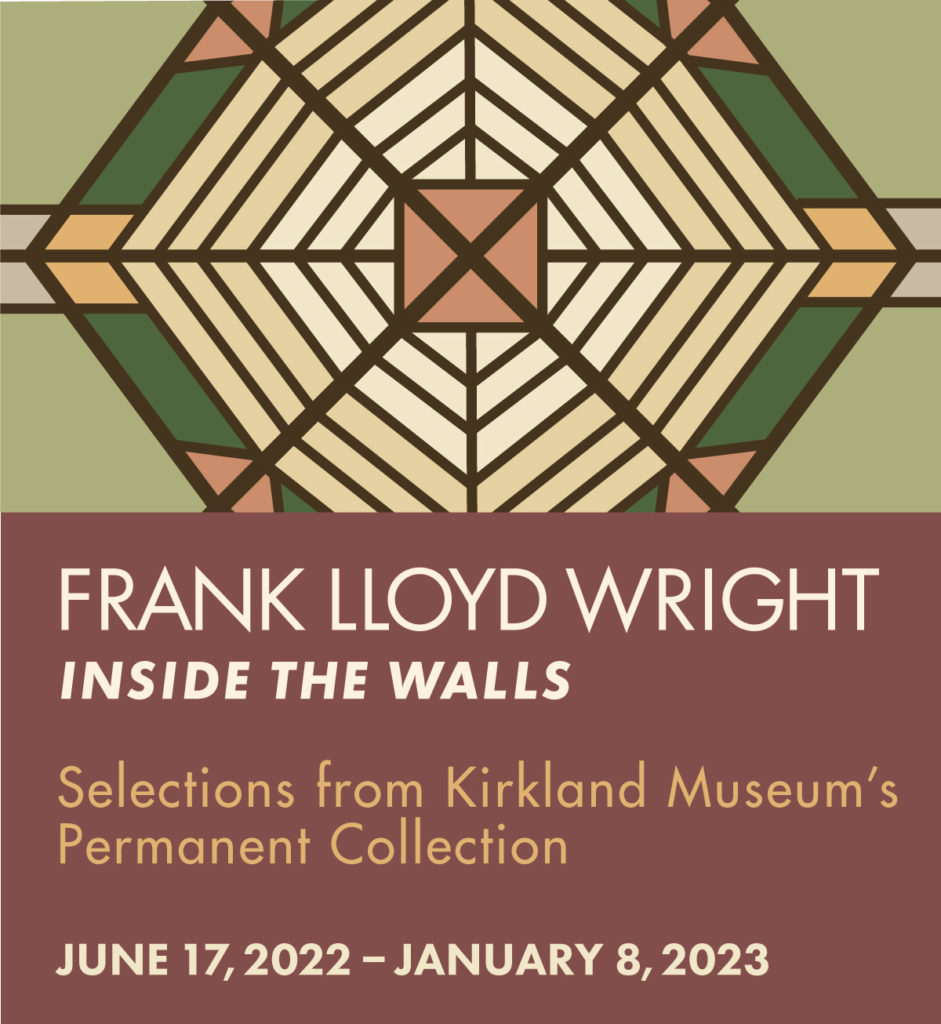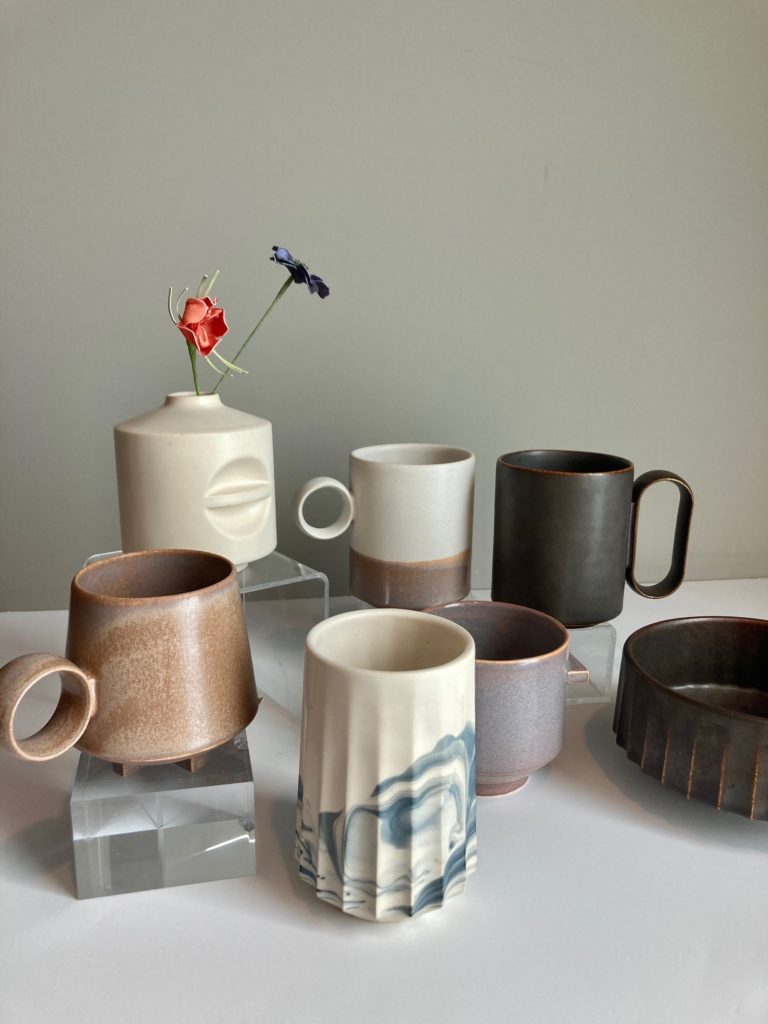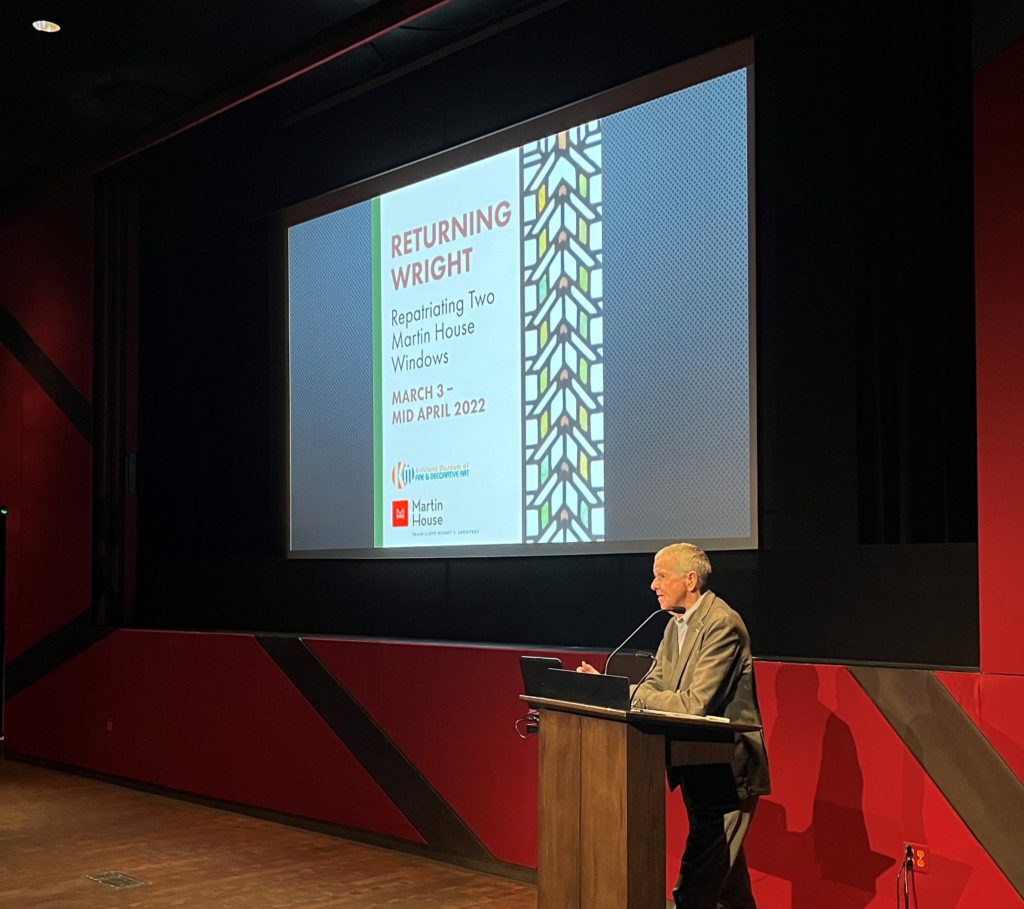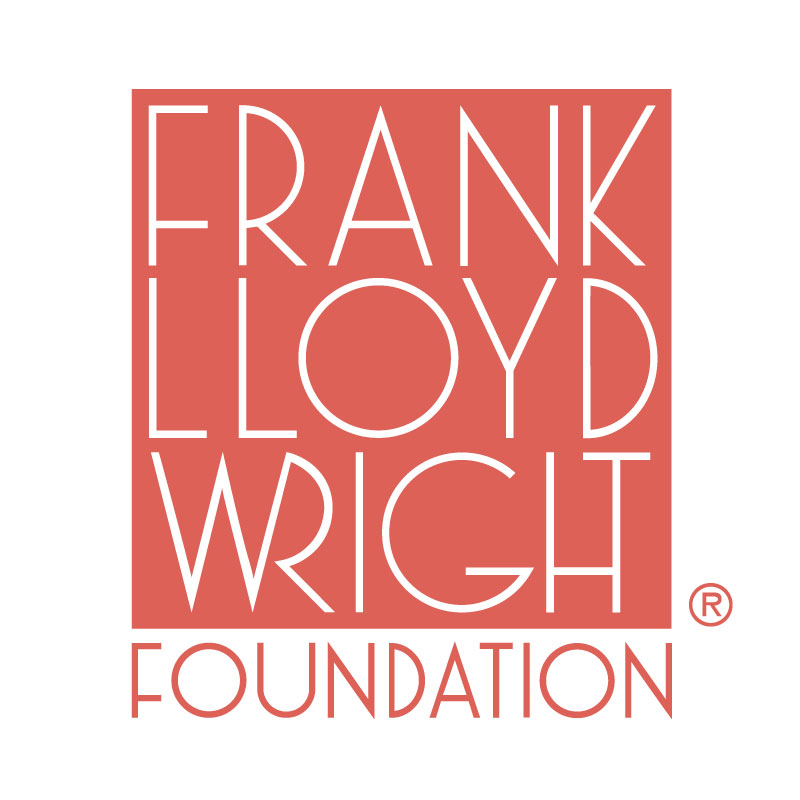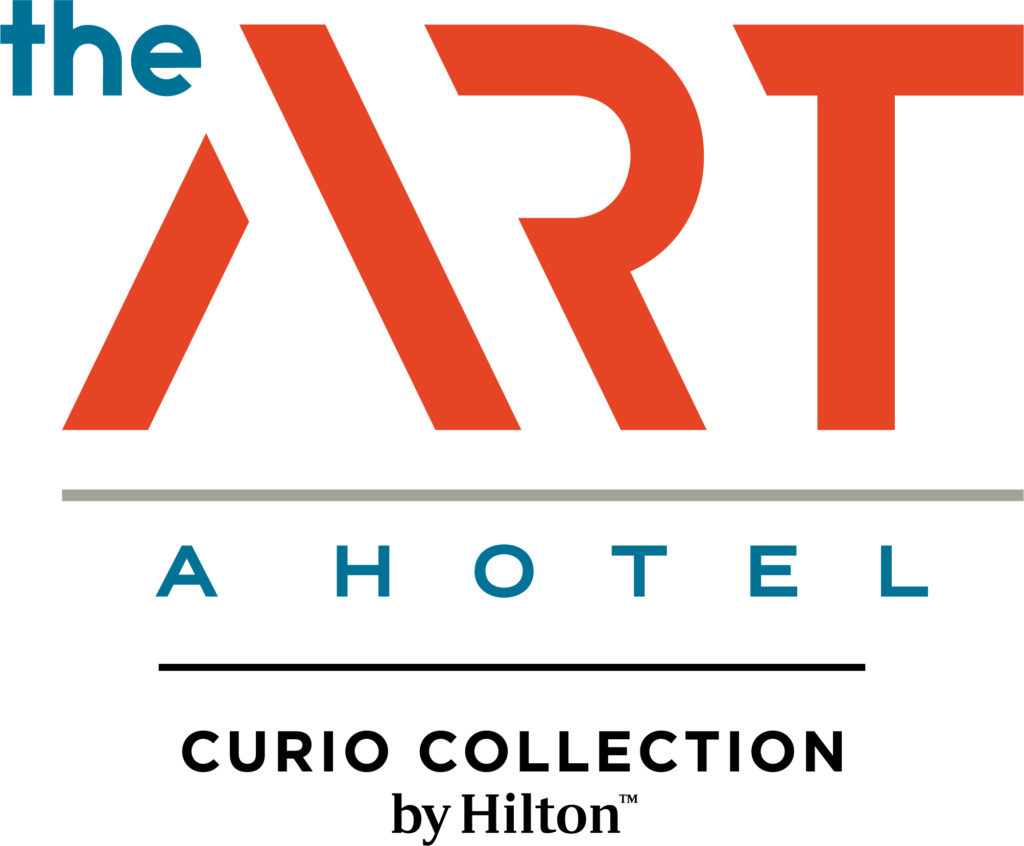In this Issue
Kirkland Stories: Martin Filler
Martin Filler is a prolific architecture critic, historian and collector. He, along with his wife Rosemarie Haag Bletter, gifted Kirkland Museum a generous donation of Aesthetic and Christopher Dresser objects, some of which were featured in our Truth, Beauty and Power: Christopher Dresser and The Aesthetic Movement exhibition in 2021 and now on view in Arts & Crafts Gallery 3. Martin has written extensively on Frank Lloyd Wright for various publications, including the New York Review. He recorded a podcast on Wright with them, which you can listen to here. As we continue our celebration of Wright, we caught up with Martin on the iconic architect and Martin’s passion for architecture and the arts.
On View: Inside the Walls
Frank Lloyd Wright is the most important and well-known American architect of our time. Did you know he also designed furniture and accessories for the inside of his buildings to fulfill his vision of a complete work of art? Visitors are invited to consider how each object reflects Wright’s unified vision – the total work of art – by exhibiting furniture and tableware with historic photographs of their original settings. Decorative art objects in the exhibition include examples from the Imperial Hotel (Tokyo), Price Tower (Oklahoma) and Austin House (South Carolina).
Frank Lloyd Wright Inside the Walls features decorative art objects from Kirkland Museum’s permanent collection designed by Wright (1867–1959) for 11 architectural projects spanning his long career.
Presented by Deputy Curator Christopher Herron and chosen from the collection assembled by Founding Director & Curator Hugh Grant, this special exhibition is included with admission.
Kirkland Museum of Fine & Decorative Art is honored to partner with Bloomberg Philanthropies to launch a new, virtual guide on Bloomberg Connects, the free arts and cultural app. The Bloomberg Connects app, available for download from the Apple App Store or Google Play Store, makes Kirkland Museum accessible for either onsite or offsite visits through audio and photo creating an introductory audio tour through the Museum.
Supplemental audio content for Frank Lloyd Wright Inside the Walls, recorded by national experts on Frank Lloyd Wright including Kirkland Museum curatorial staff, is featured in our virtual guide on Bloomberg Connects.
What’s In Store? Sip with See Saw Ceramics
Bring local crafted art and design home with a visit to the Museum Store! Former architects Kelsey Julian and Dillon Canfield are the brilliance behind the designs of See Saw Ceramics. From their Longmont-based workshop, the duo is developing functional ceramic collections with play and precision at the center of their craft.
Members receive 10% off at the Museum Store, including on See Saw Ceramics.
Kelsey and Dillon begin their process by creating a 3D-printed prototype that can be handled and refined before moving into the mold-making stage. A silicone “mother mold” is cast using the 3D-printed form, from which multiple plaster molds can be made. The glazing process is part of the final steps before the pottery is fired in a kiln. “Our process allows ease for these refined, small details,” Kelsey said.
See Saw Ceramics are meant to be savored and invite an artful ritual to an early morning matcha or an evening cocktail. Their designs include a variety of textures and neutral colorways that work well together and stacked on a shelf. Each good they produce carries the details of a unique form, but also finds coherence in their respective collection.
Education & Events: Explore the Genius of Wright
Frank Lloyd Wright Lecture Tickets NOW ON SALE!
Join us live or virtually for upcoming lectures with renowned Frank Lloyd Wright experts.
Wednesday, August 3, 2022, 6 to 8pm
Stuart Graff, President and CEO of the Frank Lloyd Wright Foundation at Taliesin West in Arizona, will lecture on the expression of unity in Frank Lloyd Wright’s designs.
Thursday, October 13, 2022, 6 to 8pm
Julie Sloan, New York-based expert on Frank Lloyd Wright’s stained and architectural glass and published author, will lecture on the lamp featured in Kirkland Museum’s exhibition.
Additional Frank Lloyd Wright Programming:
A Curator Talk with Christopher Herron, Deputy Curator at Kirkland Museum, will take place in September. Updates will be posted on the website here.
Watch Jack Quinan Lecture
Members kicked off our celebration of Frank Lloyd Wright in March with a lecture presented by Distinguished Service Professor Emeritus from the University of Buffalo (SUNY) and Curator Emeritus at Frank Lloyd Wright’s Martin House, Jack Quinan, PhD. A recording of this lecture is available for purchase.
Curate Your Experience with a Guided Tour!
Gather your friends, family or colleagues for a Private Guided Tour to learn about Kirkland Museum’s three collections. If you like having dialogue with a knowledgeable guide and being led on an educational journey through the Museum, this is for you!
Members receive a 10% discount off the total cost of any Private Guided Tour (tour must be booked by a current member).
We encourage a visit at the Museum for at least 90 minutes. Private Guided Tours typically run about an hour with time afterward for exploring and shopping. We welcome groups of 10 or more during public Museum hours (Tuesday-Saturday 11am to 5pm, Sunday 12 to 5pm).
Due to the intimate size of the galleries, groups with more than 15 people will be required to split into multiple groups or begin with staggered tour times.
Tour availability is limited, so advanced planning is appreciated.
Kirkland Stories: Martin Filler
Full Story
 Martin Filler is a prolific architecture critic, historian and collector. He, along with his wife Rosemarie Haag Bletter, gifted Kirkland Museum a generous donation of Aesthetic and Christopher Dresser objects, some of which were featured in our Truth, Beauty and Power: Christopher Dresser and The Aesthetic Movement exhibition in 2021 and now on view in Arts & Crafts Gallery 3. Martin has written extensively on Frank Lloyd Wright for various publications, including the New York Review. He recorded a podcast on Wright with them, which you can listen to here. As we continue our celebration of Wright, we caught up with Martin on the iconic architect and Martin’s passion for architecture and the arts.
Martin Filler is a prolific architecture critic, historian and collector. He, along with his wife Rosemarie Haag Bletter, gifted Kirkland Museum a generous donation of Aesthetic and Christopher Dresser objects, some of which were featured in our Truth, Beauty and Power: Christopher Dresser and The Aesthetic Movement exhibition in 2021 and now on view in Arts & Crafts Gallery 3. Martin has written extensively on Frank Lloyd Wright for various publications, including the New York Review. He recorded a podcast on Wright with them, which you can listen to here. As we continue our celebration of Wright, we caught up with Martin on the iconic architect and Martin’s passion for architecture and the arts.
Kirkland Museum: Why did you first give to Kirkland Museum?
Martin Filler: All museum donors would like to have their gifts seen and appreciated by the public, but that is difficult with long-established institutions like New York’s Museum of Modern Art, which already has a comprehensive collection of historic design objects. As a compulsive collector who at a late stage of life wanted to reduce my far-too-large number of possessions, I was delighted to discover the Kirkland, a relatively new museum that was interested in expanding their holdings in areas that have long interested me. These include the Arts & Crafts Movement in Britain, and particularly its most important industrial designer, Christopher Dresser, whose work has been a major favorite of mine. The beautiful job the Kirkland did with their 2021 Dresser exhibition fully justified my intuition that this was the best possible final destination for my finest pieces by him, and I’m impressed at how beautifully and intelligently they’ve presented them to the public.
KM: What makes the Kirkland different from other museums?
MF: The Kirkland is markedly different from most other American art institutions in its compact size and focus—and not just physically, which makes a visit there a manageable experience in contrast to encyclopedic museums where it can be difficult to concentrate on just one topic. When you deal with the Kirkland about donations you don’t have to go through layer after layer of bureaucracy and I’ve found all my transactions with them to be a complete pleasure.
KM: How were you initially drawn into architecture?
MF: I can recall that even as a child of five or six I had vivid impressions of unusual buildings I’d see, especially Howe & Lescaze’s PSFS tower of 1932 in Philadelphia. I went there with my mother when she opened a savings account, and I was instantly blown away by the majestic scale and powerful simplicity of this first masterpiece of International Style architecture in the U.S. Around the same time I had a very similar gut reaction to Frank Furness’s quite different Pennsylvania Academy of Fine Arts of 1876, also in Philly, which stunned me with its vivid multicolored brick and terra cotta façade. Why? Pure instinct, I guess, but I was hooked on architecture by the time I entered first grade.
KM: As an architecture historian, what is a project that inspired you most?
MF: Many works of architecture inspire me all the time for various reasons, but lately I’m particularly thrilled by the Gando Elementary School of 2001 in the African nation of Burkina Faso by the winner of the 2022 Pritzker Architecture Prize, Francis Kéré. I’ve always believed that architecture should be socially useful, not merely beautiful, and this small, inventively conceived structure is not only wonderfully designed, but was also the first school of any kind to be built in the architect’s impoverished hometown. Kéré is committed to improving the lives of his countrymen through his singular talent, and I find that more inspiring than anything else.
KM: What about Frank Lloyd Wright and his work interest you the most?
MF: I never cease to be amazed at the way Wright’s architecture communicates so directly with the general public and not only architecture specialists. When I visit his buildings across America, I know I won’t be encountering just the European and Asian architecture students and “architourists” who are commonplace visitors to other landmarks of modern architecture, but instead, I’ll find ordinary folks who have heard of Wright even if they know little else about architecture. I’m certain that this strong populist drawing power would please Wright more than anything else, and it speaks to his ability to express deep architectural values—protective shelter, spiritual harmony and love of the land—that can bring diverse people together.
KM: How does Wright’s work remain relevant?
MF: Wright not only remains perpetually relevant but is perhaps even more so today than in his lifetime because of the increased urgency surrounding ecologically responsive and sustainable design. His sensitivity to natural settings, his disdain for purely technological solutions to architectural problems, and his respect for local land-use practices—his mother’s family farmed a great valley in Wisconsin, where their conservation values were impressed on him early on—make him a relevant figure to this day. His weak point was an over-fondness for the private automobile as America’s principal form of transportation. But, since he was so attuned to moving with the times, I’m sure he’d applaud current movements away from fossil fuels to electricity and other renewable energy sources.
KM: What are your thoughts on Wright’s philosophy on a “total work of art?
MF: Wright was a child of his times in valuing the late 19th century concept of “the total work of art,” in which all elements of an architectural design— from landscape, to building, to interior decoration—were all under the control of a single artistic arbiter. On the one hand, this gave great unity to an overall design, as opposed to the hodgepodge of discordant elements typical of mainstream Victorian design when Wright was growing up. On the other hand, it limited clients’ ability to adjust an interior to their personal taste. Wright’s fully thought-out schemes made it difficult to introduce furniture from other periods—forget family heirlooms and his highly detailed walls did not provide adequate space for hanging artworks. But his admirers were willing to submit to his bossy genius in order to experience the many other benefits of dwelling in his revolutionary and life-affirming houses.
Thank You to all our 2022 Frank Lloyd Wright Sponsors
Creative Support Provided By:
“The Frank Lloyd Wright Foundation is pleased to support Kirkland Museum’s exhibition, Frank Lloyd Wright Inside the Walls, and I look forward to giving a guest lecture,” says Stuart Graff, President and CEO of the Frank Lloyd Wright Foundation. “Wright’s visionary designs were all about unifying landscapes, buildings and the other elements of design in a total work of art that had the power to make our lives better. Kirkland’s upcoming exhibition will reveal how his design principles are still relevant—and needed more than ever—in our lives and in the future.”
“By making this extraordinary gift of these light screens, Kirkland Museum has asserted its leadership role as a steward of the public trust and reinforced its legacy as a center of cultural and artistic excellence,” states Martin House Executive Director Mary Roberts. “The light screens represent an excellent sampling of Wright’s genius in glass, which is critical to the scholarly interpretation and general appreciation of the Martin House estate.”
Additional and future sponsorship opportunities are available. Email [email protected] to start the conversation.

